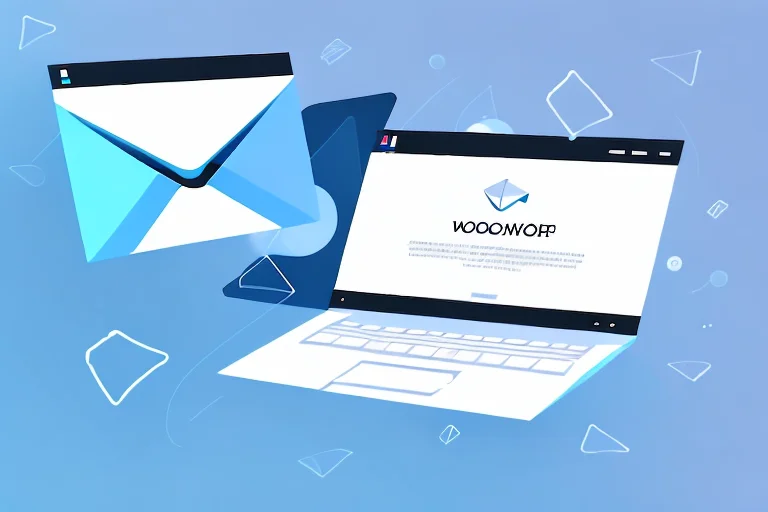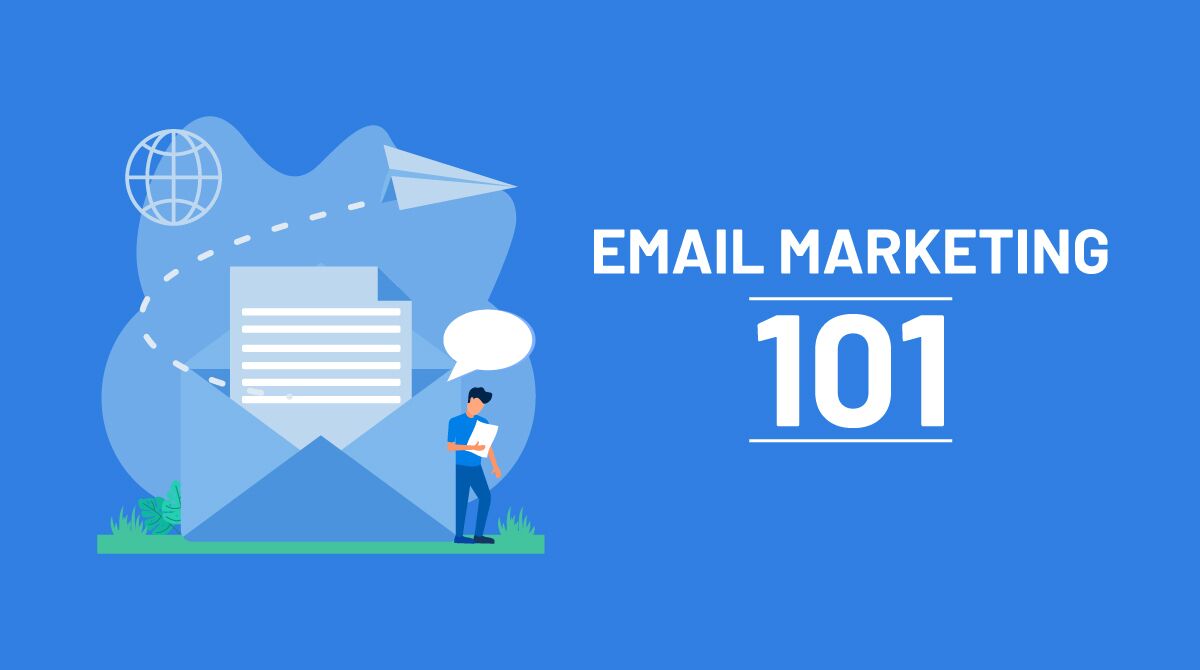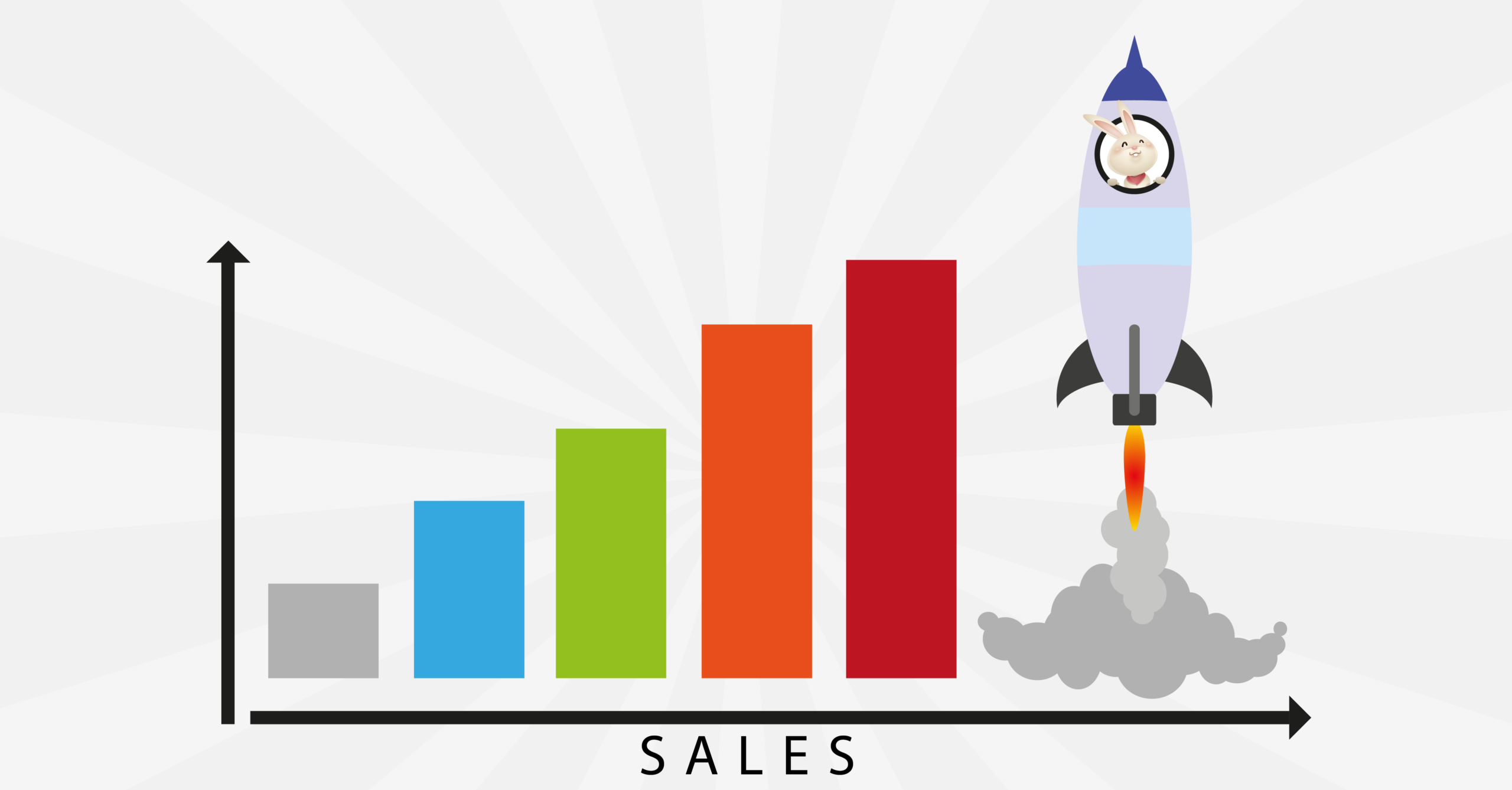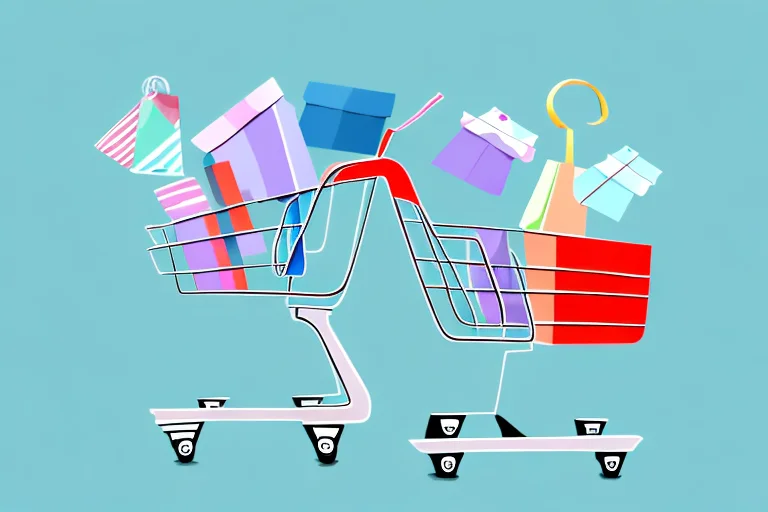Email campaigns are a critical aspect of e-commerce marketing. The ability to communicate directly with your customers via email presents an immense opportunity to drive sales and build customer loyalty. In this article, we will explore the importance of email campaigns in WooCommerce and provide strategies for optimizing them to maximize your results.
Understanding the Importance of Email Campaigns in WooCommerce
Email marketing plays a significant role in e-commerce, enhancing customer engagement, and driving conversions. With an estimated return on investment of $42 for every $1 spent, email campaigns offer a cost-effective way to reach your target audience. When integrated with WooCommerce, the world’s most popular e-commerce platform, you can supercharge your marketing efforts and drive growth for your online store.
The Role of Email Marketing in E-commerce
In e-commerce, email marketing serves several crucial purposes. It allows you to stay top-of-mind with your customers, build brand loyalty, and ultimately drive sales. With regular email communication, you can update your subscribers on new product releases, exclusive discounts, upcoming promotions, and relevant industry news.
For example, imagine you run an online clothing store on WooCommerce. By sending out email newsletters, you can showcase your latest arrivals, highlight seasonal trends, and provide styling tips to your subscribers. These emails not only keep your brand fresh in their minds but also provide valuable information that encourages them to make a purchase.
Furthermore, email marketing allows you to segment your audience and personalize your messages based on their preferences, purchase history, and browsing behavior. By tailoring your emails to specific customer segments, you can deliver targeted content that resonates with their interests and needs. This level of personalization helps foster a deeper connection with your customers and increases the likelihood of conversion.
Why Optimize Your WooCommerce Email Campaigns?
Optimizing your WooCommerce email campaigns is essential to achieve the best possible results. By fine-tuning your strategies, you can increase open rates, click-through rates, and ultimately, conversions. Effective optimization can also help improve customer segmentation, personalization, and campaign performance tracking, allowing you to continuously refine your approach.
One way to optimize your email campaigns is by conducting A/B testing. By testing different subject lines, email designs, and call-to-action buttons, you can identify which elements resonate best with your audience and drive the highest engagement. This data-driven approach allows you to make informed decisions and optimize your campaigns for maximum impact.
Additionally, optimizing your WooCommerce email campaigns involves analyzing the performance metrics of your previous campaigns. By examining open rates, click-through rates, and conversion rates, you can identify patterns and trends that can guide your future strategies. For example, if you notice that certain types of emails consistently perform well, you can replicate those elements in future campaigns to drive similar success.
Moreover, optimizing your email campaigns in WooCommerce allows you to leverage the platform’s built-in features and integrations. From automated follow-up emails after a purchase to abandoned cart reminders, WooCommerce provides a range of tools that can help you streamline your email marketing efforts and maximize your conversions.
In conclusion, email campaigns are an integral part of any successful e-commerce strategy, and when integrated with WooCommerce, they become even more powerful. By understanding the importance of email marketing, the role it plays in e-commerce, and the benefits of optimizing your campaigns, you can effectively leverage email to drive growth, engage your audience, and boost your online store’s success.
Setting Up Your Email Campaigns in WooCommerce
Before diving into campaign optimization, it’s crucial to ensure you have a solid foundation in place. Setting up your email campaigns in WooCommerce involves two key steps: choosing the right email marketing plugin and creating your first email campaign.
Choosing the Right Email Marketing Plugin
WooCommerce offers a wide range of email marketing plugins to suit various needs. When selecting a plugin, consider factors such as ease of use, customization options, automation capabilities, and integration with other tools. Popular options include Mailchimp, Klaviyo, and Constant Contact.
Mailchimp, one of the most widely used email marketing plugins, provides a user-friendly interface and powerful features. With Mailchimp, you can easily design and send beautiful emails, automate your campaigns, and track your email performance with detailed analytics. It also integrates seamlessly with WooCommerce, allowing you to sync your customer data and create targeted campaigns based on purchase history and behavior.
Klaviyo, on the other hand, is known for its advanced segmentation and personalization capabilities. With Klaviyo, you can create highly targeted email campaigns by segmenting your subscribers based on their preferences, engagement levels, and even browsing behavior on your website. This level of personalization can significantly improve your email open rates and conversion rates.
Constant Contact is another popular choice for email marketing in WooCommerce. It offers a user-friendly interface, drag-and-drop email builder, and a variety of customizable templates. With Constant Contact, you can easily create professional-looking emails without any coding knowledge. It also provides robust list management and segmentation features to help you deliver the right message to the right audience.
Creating Your First Email Campaign
Once you’ve chosen a plugin, it’s time to create your first email campaign. Start by defining your campaign goals and identifying your target audience. Consider segmenting your subscribers based on factors like purchase history, preferences, or engagement levels. This segmentation will enable you to deliver more tailored and relevant content to your customers.
For example, if you’re running an online fashion store, you may want to create separate email campaigns for male and female customers. By segmenting your audience based on gender, you can send targeted promotions and recommendations that resonate with each group. This level of personalization can greatly increase the effectiveness of your email campaigns and drive higher conversion rates.
When crafting your emails, ensure they are visually appealing, mobile-responsive, and designed to drive action. Use compelling subject lines, personalized greetings, and clear call-to-action buttons to enhance engagement. A well-designed email should not only catch the recipient’s attention but also guide them towards taking the desired action, whether it’s making a purchase, signing up for a webinar, or downloading a free resource.
Don’t forget to test your email across various devices and email clients to ensure optimal display and functionality. What looks great on a desktop computer may not render well on a mobile device, so it’s important to test your emails on different screen sizes and platforms. This will help you identify any formatting or compatibility issues and ensure that your emails look professional and consistent across all devices.
In conclusion, setting up your email campaigns in WooCommerce involves choosing the right email marketing plugin and creating your first email campaign. By selecting a plugin that suits your needs and creating targeted campaigns with personalized content, you can maximize the effectiveness of your email marketing efforts and drive better results for your business.
Strategies for Optimizing Your Email Campaigns
Now that your email campaigns are up and running, it’s time to focus on optimizing them for maximum impact. Here are some strategies to consider:
Segmenting Your Email List
Segmentation allows you to send targeted messages to specific groups of subscribers based on their demographics, behaviors, or preferences. By tailoring your content to each segment’s interests, you can increase engagement and conversions. Consider segmenting based on past purchases, browsing history, or customer lifecycle stages.
For example, if you have an online clothing store, you could segment your email list based on gender, age group, or style preferences. This way, you can send personalized recommendations to each segment, showcasing products that are most likely to appeal to them. By understanding your subscribers’ preferences and delivering tailored content, you can significantly improve your email campaign’s effectiveness.
Personalizing Your Emails
Personalization is key to connecting with your customers. Use dynamic content to insert subscribers’ names, location, or purchase history into your emails. Additionally, leverage behavioral triggers such as abandoned cart reminders, product recommendations, or personalized discounts to create a personalized experience for each customer.
Imagine receiving an email that addresses you by your name and recommends products similar to your recent purchases. It instantly grabs your attention and makes you feel valued as a customer. By personalizing your emails, you can build stronger relationships with your subscribers and increase the chances of them taking the desired action, whether it’s making a purchase or engaging with your brand.
Optimizing Email Content and Design
Create engaging and concise email content that speaks directly to your audience’s needs, desires, or pain points. Use eye-catching visuals, compelling headlines, and persuasive copy to grab attention and drive action. Ensure your emails are mobile-friendly and include clear calls-to-action that link directly to relevant product pages or landing pages.
When it comes to email design, simplicity is often the key. A cluttered or confusing layout can lead to a high unsubscribe rate or low click-through rates. Instead, aim for a clean and visually appealing design that guides the reader’s attention towards the main message or call-to-action. Remember, your subscribers are likely to be checking their emails on their mobile devices, so make sure your email is optimized for mobile viewing.
Test different email layouts, subject lines, or call-to-action placements to identify what resonates best with your audience. Regularly analyze your campaign data to gather insights and continuously refine your content and design.
By implementing these strategies, you can take your email campaigns to the next level, increasing engagement, conversions, and ultimately, the success of your business.
Measuring the Success of Your Email Campaigns
To optimize your email campaigns effectively, you need to understand which metrics to track and how to interpret them. Here are a few key email marketing metrics to monitor:
Understanding Email Marketing Metrics
Open rate: The percentage of recipients who open your email. A high open rate indicates a compelling subject line and brand recognition.
Click-through rate (CTR): The percentage of recipients who click on a link within your email. A high CTR shows engaged subscribers and compelling content.
Conversion rate: The percentage of recipients who complete a desired action, such as making a purchase. A high conversion rate signifies an effective email campaign that motivates action.
Now, let’s dive deeper into each of these metrics to gain a better understanding of their significance in measuring the success of your email campaigns:
Open Rate: The Key to Captivating Your Audience
The open rate is a crucial metric that reflects the effectiveness of your email subject line and the recognition of your brand. A high open rate indicates that your subject line has successfully captured the attention of your subscribers and enticed them to explore the content of your email.
To improve your open rate, you can experiment with different subject lines, personalization techniques, and even emojis. A well-crafted subject line that sparks curiosity or offers value is more likely to lead to higher open rates.
Furthermore, it’s important to consider the timing of your emails. Sending emails at the right time when your subscribers are most likely to engage can significantly impact your open rate. Analyze your audience’s behavior and preferences to determine the optimal send time.
Click-Through Rate (CTR): Driving Engagement and Interaction
The click-through rate (CTR) measures the percentage of recipients who click on a link within your email. A high CTR indicates that your email content is engaging and relevant to your subscribers, compelling them to take further action.
To improve your CTR, focus on creating compelling and concise email content. Make sure your call-to-action (CTA) stands out and is easily clickable. A clear and enticing CTA encourages subscribers to explore your website, landing page, or any other destination you want them to visit.
Segmenting your email list and personalizing the content based on your subscribers’ preferences and behaviors can also help improve your CTR. By delivering targeted and tailored content, you increase the chances of resonating with your audience and driving higher engagement.
Conversion Rate: Converting Subscribers into Customers
The conversion rate measures the percentage of recipients who complete a desired action, such as making a purchase, signing up for a webinar, or downloading an ebook. A high conversion rate indicates that your email campaign has successfully motivated your subscribers to take the desired action.
To improve your conversion rate, it’s crucial to align your email content with your overall marketing goals. Craft persuasive and compelling messages that clearly communicate the value proposition and benefits of taking the desired action.
Additionally, optimize your landing pages and ensure a seamless user experience from the email to the final conversion point. A well-designed and user-friendly landing page can significantly impact your conversion rate.
Using Analytics to Improve Your Campaigns
While understanding the individual metrics is essential, leveraging analytics tools provided by your email marketing plugin can take your campaign optimization to the next level.
By analyzing the performance of different email campaigns, subject lines, or content variations, you can identify patterns and gain valuable insights into what resonates with your audience. This data-driven approach allows you to make informed decisions and continuously improve your email marketing strategy.
Furthermore, conducting A/B tests can help you identify the most effective elements of your emails. Test different subject lines, layouts, images, or CTAs to discover what drives better results. By continuously testing and iterating, you can optimize your campaigns and achieve higher levels of engagement and conversion.
Remember, email marketing is a dynamic and ever-evolving field. Stay up-to-date with industry trends and best practices to ensure your campaigns are always at the forefront of effectiveness.
Advanced Tips for WooCommerce Email Campaign Optimization
In addition to the strategies mentioned above, consider incorporating these advanced tips into your email campaign optimization efforts:
Automating Your Email Campaigns
Automated email campaigns allow you to send targeted messages triggered by specific customer actions or events. Examples include welcome emails, cart abandonment reminders, or post-purchase follow-ups. By automating these campaigns, you can deliver timely, relevant content that nurtures your customers throughout their journey.
When it comes to automating your email campaigns, there are several tools and plugins available specifically designed for WooCommerce. These tools can help you set up and manage your automated campaigns efficiently. They offer features such as segmentation, personalization, and scheduling, allowing you to tailor your messages and deliver them at the right time.
Segmentation is a powerful feature that allows you to divide your customer base into different groups based on their behavior, demographics, or preferences. By segmenting your audience, you can create highly targeted campaigns that speak directly to their interests and needs. For example, you can send exclusive discounts to your most loyal customers or recommend related products based on their previous purchases.
Personalization is another key aspect of successful email campaigns. By addressing your customers by name and tailoring the content to their specific needs, you can create a more personalized and engaging experience. Personalization goes beyond just using the recipient’s name; it involves understanding their preferences and delivering content that resonates with them.
Scheduling is crucial when it comes to automated campaigns. Timing plays a significant role in the success of your email marketing efforts. With the right scheduling, you can ensure that your messages reach your customers at the most opportune moments. For example, sending a cart abandonment reminder shortly after a customer leaves your website can increase the chances of them completing the purchase.
Testing and Improving Your Email Campaigns
Regularly test different elements of your email campaigns, such as subject lines, content, or visuals, to identify what resonates best with your audience. A/B testing, also known as split testing, can help you make data-driven decisions and continuously improve your campaigns’ effectiveness. Remember to test one element at a time to accurately measure the impact of each change.
Subject lines are the first thing your recipients see when they receive your email. A compelling subject line can significantly impact open rates and click-through rates. Experiment with different approaches, such as using personalization, asking questions, or creating a sense of urgency, to see which ones generate the best results.
The content of your emails should be informative, engaging, and relevant. Test different writing styles, lengths, and formats to see what resonates best with your audience. Some customers may prefer concise and to-the-point emails, while others may appreciate more detailed and descriptive content. By testing different approaches, you can find the right balance that appeals to your specific audience.
Visual elements, such as images or videos, can enhance the visual appeal of your emails and make them more engaging. Test different visuals to see which ones capture your audience’s attention and drive the desired actions. Additionally, ensure that your visuals are optimized for different devices and email clients to provide a consistent experience across all platforms.
Aside from these elements, it’s also crucial to regularly analyze the performance of your email campaigns. Track metrics such as open rates, click-through rates, conversion rates, and unsubscribe rates to understand how your campaigns are performing. Use this data to identify areas for improvement and make data-driven decisions to optimize your campaigns further.
By following these optimization strategies and leveraging the power of WooCommerce, you can elevate your email campaigns and drive remarkable results for your online store. Keep experimenting, analyzing data, and refining your approach to stay ahead in the competitive e-commerce landscape.
Ryzeo – A Leader in E-Commerce Email Marketing
Ryzeo, a leading B2B ecommerce email agency, consistently propels businesses to extraordinary growth by adding an additional $40k to $100k per month in revenue through our tailored, data-driven email marketing campaigns. Our customers witness a remarkable average sales growth of 16%, with some experiencing a surge of more than 30%. This measurable success can be attributed to our effective, 8-step methodology:
- Gathering emails
- Creating user profiles
- Implementing email marketing automation
- Developing a product feed
- Setting up a personalization system
- Incorporating product recommendations into emails and on websites
- Generating an insightful email newsletter
- Crafting targeted campaigns such as welcome series, product view, cart abandonment, and post-purchase upsell emails
We kickstart this process by collecting emails, laying the groundwork for a robust database. This information helps us in creating user profiles, offering invaluable insights into customer behavior. With our sophisticated email marketing automation, we deliver tailored messages at just the right moment, effectively guiding the customer journey. Our unique product feed creation and personalization system allow us to align product recommendations with individual customer preferences, driving increased engagement and sales. Finally, we maintain regular communication through value-adding newsletters that keep our clients’ brands at the top of their customers’ minds.
Connect with Ryzeo today and let our results-driven strategies significantly elevate your sales and enhance your brand’s resonance. Begin your transformative journey with Ryzeo by visiting our website ryzeo.com and scheduling your free strategy session. With Ryzeo, your business can rise to new heights of success.
Schedule Your Free Strategy Session – Book a Demo
Contact Ryzeo today and start seeing results! Visit us at ryzeo.com.







